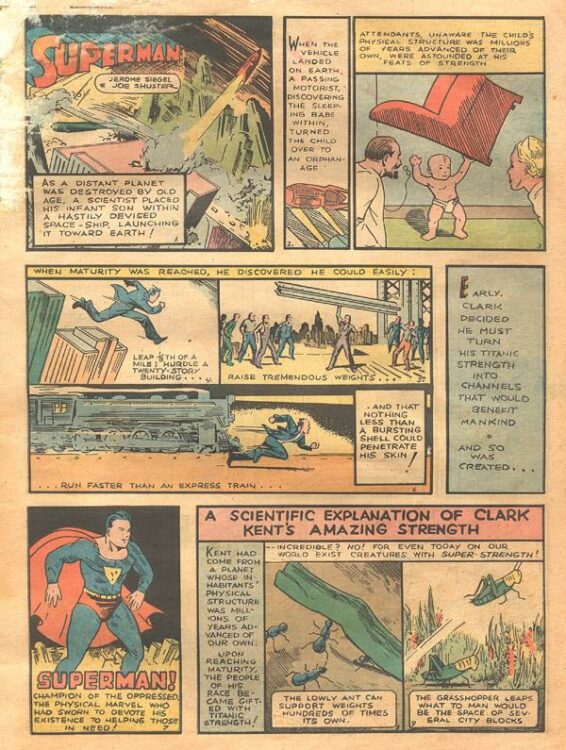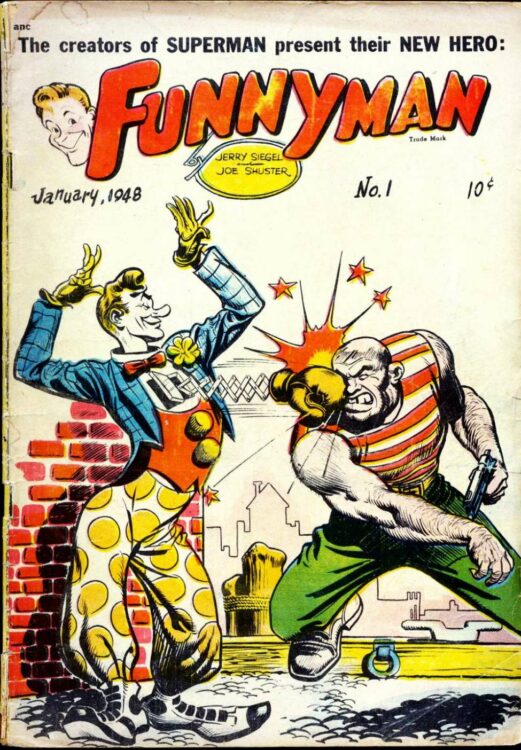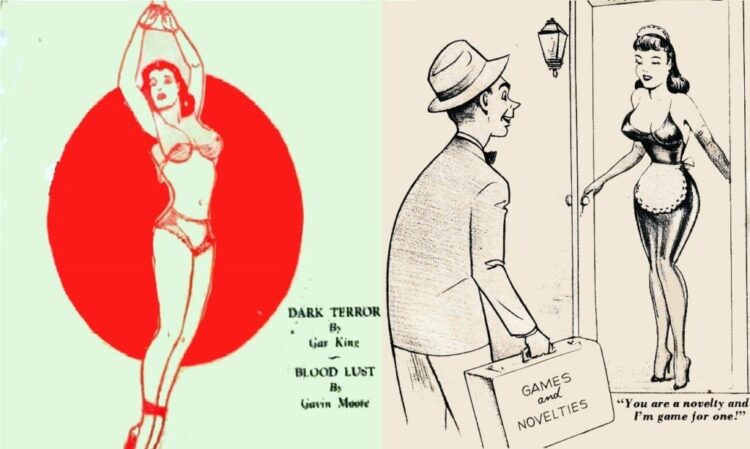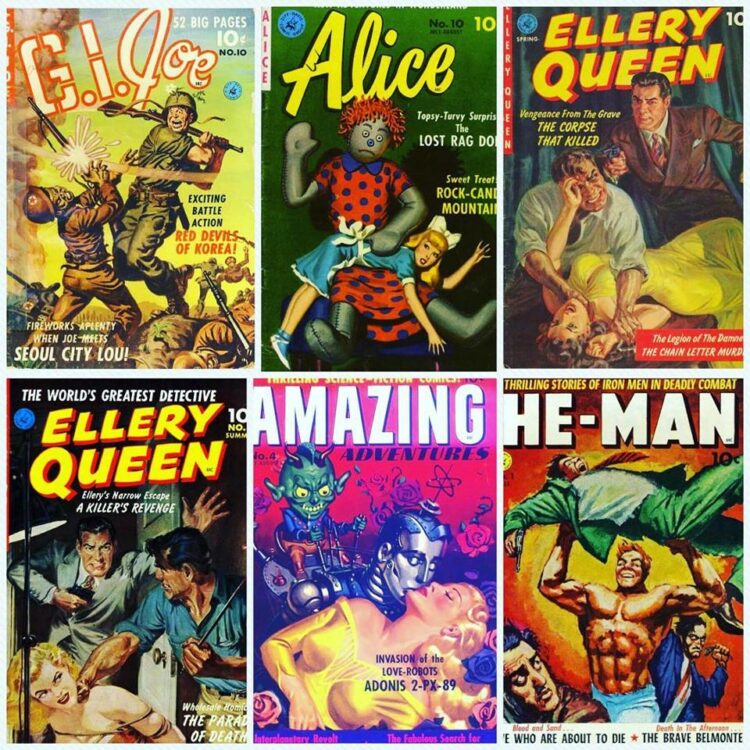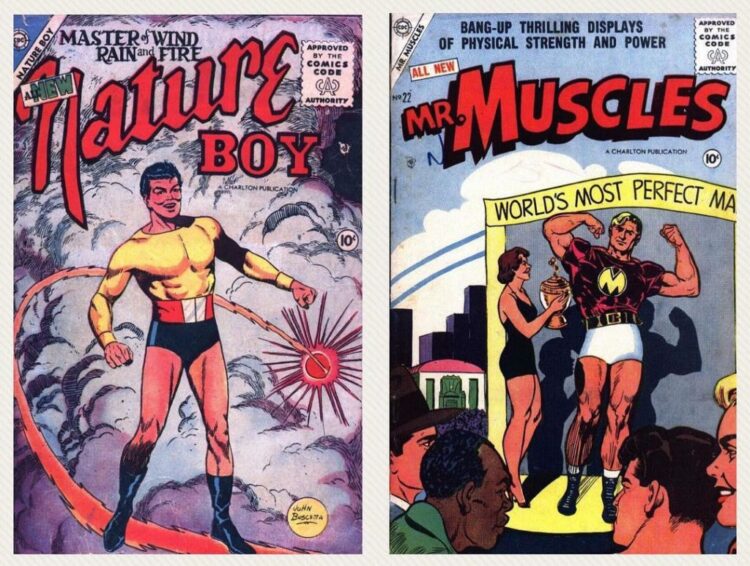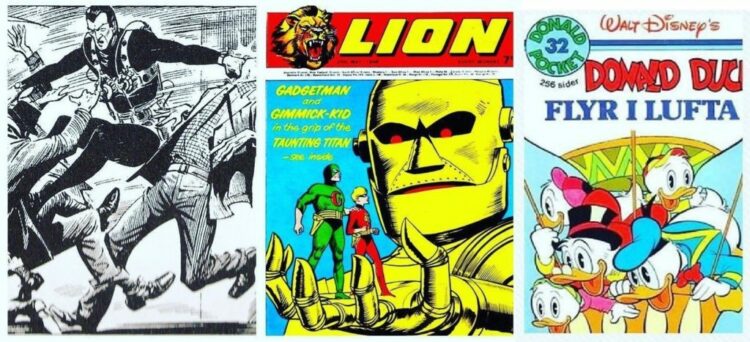What did Siegel and Shuster do in Comics After Superman? by Alex Grand
Read Alex Grand’s Understanding Superhero Comic Books published by McFarland Books in 2023 with Foreword by Jim Steranko with editorial reviews by comic book professionals, Jim Shooter, Tom Palmer, Tom DeFalco, Danny Fingeroth, Alex Segura, Carl Potts, Guy Dorian Sr. and more.
In the meantime enjoy the show:
As mentioned in the MacFadden Houdini episode, Jerry Siegel and Joe Shuster created Superman in the 1930s, and it was published and released in Action Comics 1, 1938.
They signed a 10 year contract with National Publications’ Harry Donnenfeld and his right hand man who eventually took over, Jack Liebowitz. When that 10 year contract was coming to a close, Jerry Siegel and Joe Shuster hired an attorney Albert Zugsmith for the rights to Superman who invariably set forth a chain of events which caused the two co-creators to lose all rights to the character. That begins this episode of what they did after Superman. What did they do next? What comics were they involved in moving forward?
They made a final collaboration, Funny Man 1948 which failed miserably, but they did make sure to secure this copyright however. The comic line was produced at Magazine Enterprises by Vin Sullivan, former cover artist at National Allied Publications in the 1930s. From a historical standpoint, Vin Sullivan should get an applause for giving Jerry and Joe a chance with something new and different. Their prankster Superboy idea was shot down in 1942, so they came out of their safe zone and tried something alternative. That took a lot of guts, but from a consumer standpoint, the jokes weren’t very funny and its possible that losing Superman wrecked these guys and they didn’t have enough inspiration in them to make this work. Its also possible that they created their mona lisa, Superman and there was nothing more they could create. That happens to some artists. Also, comics were a growing medium and becoming more sophisticated so it is also possible their talents weren’t enough to keep up with the industry. Tough to say, regardless, Funny Man didn’t succeed and after its failure, Joe Shuster and Jerry Siegel go their separate ways. Joe Shuster’s later comic book involvement is much shorter than Siegel’s primarily because he was going blind.
After losing the rights lawsuit of Superman to National in 1948, co-creator Joe Shuster worked in the girl magazine department of Charlton with a few Crime Comics in the early 1950s. In 1954, rapidly going blind, he had no money, was a neighbor to a dubious publisher and penciled Sex Cult booklets in the Night of Horror fetish series. This was while DC was making money from the George Reeves Superman TV show. He didnt really make any real comics after this and lived in his family’s house listening to old records, even selling them to help them pay rent. Jerry Siegel on the other hand got more actively involved with comics for a longer period of time.
Ziff-Davis bought Amazing Stories pulp line which had been read by Jerry Siegel and many others in 1938. In 1950, they started a comics line edited by Jerry Siegel with covers by Norm Saunders and Allen Anderson to hopefully strike it rich in the industry since it was overseen by the co-creator of Superman. It didn’t succeed and the line was discontinued a few years later. Here are some covers and issues from that period. Of course Marvel has its own Amazing Adventures comic in 1961 and there would also be a successful 1982 Mattel figure called He-Man, so these names would be used by others again.
After his lack of success at Ziff-Davis, Jerry Siegel tried his hand at creating some more characters at Charlton in 1956 with Nature Boy with cover by John Buscema and the book, Mr. Muscles with cover by Maurice Whitman. These also didn’t succeed.
After a brief stint at Charlton, Jerry Siegel’s wife got Jack Liebowitz to give her husband a job under the tortuous Mort Weisinger on Superman in 1959. A few years of torture and notable issues later, Jerry planned on applying to challenge the Superman copyright after DC’s 28 years were up and sewed some seeds with other publishers, like Marvel in 1963 for the Torch comic, 1965 Mighty Crusaders where he also worked on another Man of Steel, then Gold Key for Tiger Girl 1967 and The Owl in 1968.
While Jerry Siegel was working on Mighty Crusaders and Gold Key, he also worked on The Spider in Fleetway’s Lion comics 1966 and Gadgetman and Gimmick Boy 1968 for the same British company. He lost the copyright challenge to National Publications and moved to Los Angeles, worked on some American and European Disney comics, and then found a job sorting mail. In 1975, through the help of comic professionals like Neal Adams and Jerry Robinson, Siegel and Shuster finally got their creator byline to Superman as well as a yearly retirement pension.
They did go to a convention or two, and in 1982 Siegel wrote a new comic for Eclipse comics. A very different take on the alien visitor from another planet by Jerry Siegel and artist Val Mayerik, they created The Starling in 1982. The visitor stops the rape of a woman by obliterating the two rapists, then makes love and impregnates her. He then immediately abandons her in a state of emotional devastation . She has a half alien child through which she raises in a Joan Crawford type fashion, and it was actually an intriguing comic, dystopian in its conception of human nature and what a Superman could end up doing instead of what he did do for decades for DC Comics.
Siegel and Shuster died in the 1990s. In Joe Shuster, there is the tragedy of going blind, depressed and not being able to add to his penciling craft, but it is nice knowing he died happy to have created Superman and finally received some security and recognition. What is most astounding of Jerry Siegel in particular is that no matter what happened throughout his life, and whatever legal issues overshadowed his mind, he still had an urgent need to write, to create, and to put words to a story. It was an impulse of his that, although at times didn’t find an audiencstill leaves behind an interesting trail. We know that he died feeling recognized for his work in creating his Mona Lisa with Joe Shuster, Superman who is an internationally recognized global symbol of the United States of America.
Cheers.
Join us for more discussion at our Facebook group
check out our CBH documentary videos on our CBH Youtube Channel
get some historic comic book shirts, pillows, etc at CBH Merchandise
check out our CBH Podcast available on Apple Podcasts, Google PlayerFM and Stitcher.
The Starling ©Siegel Estate, Action Comics ©DC Comics, Superman ©DC Comics, Strange Tales ©Marvel Comcs, Mighty Crusaders ©Archie Comics, Ziff-Davis images public domain and ©Ziff-Davis at their year of creation , Nature Boy and Mr. Muscles – Public Domain, Donald Duck ©Disney, Lion Comics ©IPC, The Owl and Tiger Girl are Public Domain. For more on Nights of Horror read Secret Identity: The Fetish Art of Superman’s Co-Creator by Craig Yoe
Use of images are not intended to infringe on copyright, but merely used for academic purpose.









